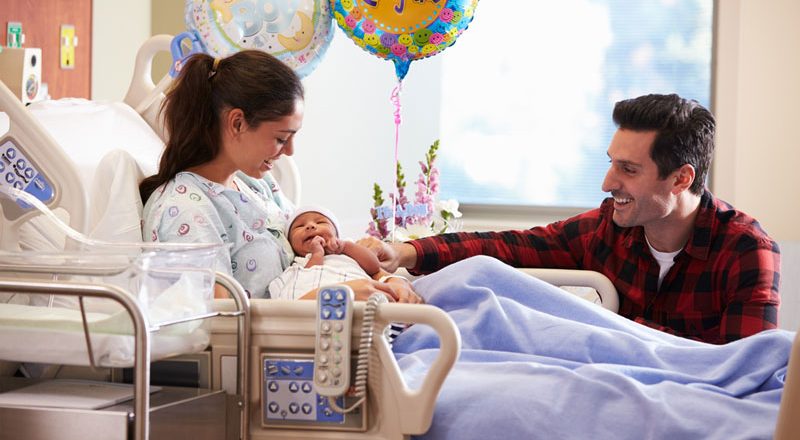C-section delivery is defined as delivering a baby via a surgical opening in the mother’s lower abdominal region. It is also called C-section. It would help if you had more recovery time after a C-section delivery than standard delivery. A mother needs to be monitored Regular after cesarean delivery to check her vitals and problems, such as mood swings, vaginal discharge, swollen breasts, and many more.
Recovery following C-section
Hospital Stay
The hospital stay following C-section is usually three days; however, this duration may vary from person to person. You will be moved to the recovery room for further monitoring. Immediately after the surgery,
Day 1
Your provider or nurse will massage your womb so that it returns to its original size. The health care provider will encourage weight-bearing and walking. In case of pain, you may be given analgesics to relieve pain. Walking is essential to prevent any complication in the stomach. You will be given pads to manage the bleeding.
Day 2
On this day, your catheter will be removed. You will be encouraged to walk more to avoid any more complications.
Day 3
This can be your discharge day. Your provider will cover your sutures with a clean, sterile bandage. You will be advised about caring for your sutures at home, along with other instructions on feeding the newborn, avoiding sexual activity, regular changing of pads, and douching until the follow-up. The incision typically heals within a month. Contact your provider if you feel pain at the site of the incision.
Home care
You should follow the following instructions to make your postcesarean delivery period easy and pain-free:
- Rest: Taking an appropriate rest is the best way to recover.
- Analgesics: You may have pain for 7 to 14 days after a C-section. Take NSAIDs, such as ibuprofen, in case of severe pain.
- Ambulation: Walking improves healing by increasing blood flow, preventing clots’ formation, and lung disorders, such as pneumonia. Take support if you cannot walk independently, and increase your pace with each passing day.
- Exercises: Exercises, such as swimming, are beneficial for an early recovery. However, take care of the stitches. Avoid strenuous activities, such as aerobics, bicycling, and lifting heavyweight for about a month. Do not perform squatting as it may strain the abdomen and lead to complications.
- Incision care: Keep the stitches and the surrounding area clean and dry. Assist your stitches with a pillow while coughing or sneezing.
- Take showers and change pads regularly to avoid infection. Also, do not douche or use tampons unless your provider instructs you to do so.
- Diet: Eating foods rich in vitamin C increases the production of collagen. Collagen is considered to be a tissue repairing protein. Foods, like nuts, are rich in omega 3-fatty acids, which reduce inflammation.
- Constipation: Constipation is one of the most common complications encountered during and after pregnancy. Eat a fibre-rich diet.
- Breastfeeding: it is important to breastfeed your child in the correct position. Follow the instructions of your provider. Always sit with your back supported. DO NOT lean forward, as it may strain your abdominal muscles.
- Counselling: Depression is common following delivery. Seek the help of a counsellor to prevent psychological disturbances.
